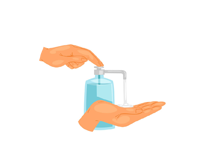Deferoxamine
Uses of Deferoxamine
- Treats iron overload due to blood transfusions
- Used in thalassemia and other chronic blood disorders
- Prevents organ damage caused by excess iron in the body
- Can be used in cases of acute iron poisoning
How Deferoxamine works
Deferoxamine binds with excess iron in the bloodstream and forms a complex that is then excreted by the body, typically through the urine. This helps to reduce the levels of iron and prevents iron toxicity, which can cause damage to organs like the liver and heart.
Benefits of Deferoxamine
- Helps to remove excess iron from the body
- Prevents iron-induced damage to vital organs
- Improves long-term health outcomes in patients with iron overload
- Can be used in acute iron poisoning to prevent organ damage
How to take Deferoxamine
- Deferoxamine is usually given as an injection or infusion
- The dosage depends on the severity of the condition and the patient`s medical needs
- It is typically administered by a healthcare professional in a clinical setting
- For home use, it may be administered subcutaneously, as prescribed by your doctor
Type of Dosage Available
- Injection
- Infusion
Side effects of Deferoxamine
- Common side effects may include pain or irritation at the injection site
- Can cause a drop in blood pressure during infusion
- Potential for allergic reactions, including rash or difficulty breathing
- Long-term use may lead to hearing or vision issues
- May cause kidney problems or gastrointestinal upset
Safety advice
- Consult your doctor before using Deferoxamine if you have kidney problems
- Monitor for signs of an allergic reaction after administration
- Ensure the proper administration technique is followed, especially for home use
- Avoid self-medicating without the guidance of a healthcare provider
- Do not stop using Deferoxamine suddenly without consulting your doctor
Frequently Asked Questions (FAQs)
Q: What is Deferoxamine used for?
A: Deferoxamine is used to treat iron overload in conditions like thalassemia and other chronic blood disorders. It helps prevent iron-related organ damage.
Q: How is Deferoxamine administered?
A: Deferoxamine is usually given as an injection or infusion. For home use, it may be administered subcutaneously as directed by your doctor.
Q: Can Deferoxamine be used for acute iron poisoning?
A: Yes, Deferoxamine can be used in cases of acute iron poisoning to prevent organ damage and remove excess iron from the body.
Q: Are there any side effects of Deferoxamine?
A: Common side effects include pain at the injection site, low blood pressure during infusion, and potential allergic reactions. Long-term use may affect hearing and vision.
Q: How long should I use Deferoxamine?
A: The duration of use depends on your medical condition. Your doctor will guide you on how long to continue treatment to avoid iron overload and protect your organs.
Medicine Not Available for Deferoxamine
Uses of Deferoxamine
- Treats iron overload due to blood transfusions
- Used in thalassemia and other chronic blood disorders
- Prevents organ damage caused by excess iron in the body
- Can be used in cases of acute iron poisoning
How Deferoxamine works
Deferoxamine binds with excess iron in the bloodstream and forms a complex that is then excreted by the body, typically through the urine. This helps to reduce the levels of iron and prevents iron toxicity, which can cause damage to organs like the liver and heart.
Benefits of Deferoxamine
- Helps to remove excess iron from the body
- Prevents iron-induced damage to vital organs
- Improves long-term health outcomes in patients with iron overload
- Can be used in acute iron poisoning to prevent organ damage
How to take Deferoxamine
- Deferoxamine is usually given as an injection or infusion
- The dosage depends on the severity of the condition and the patient`s medical needs
- It is typically administered by a healthcare professional in a clinical setting
- For home use, it may be administered subcutaneously, as prescribed by your doctor
Type of Dosage Available
- Injection
- Infusion
Side effects of Deferoxamine
- Common side effects may include pain or irritation at the injection site
- Can cause a drop in blood pressure during infusion
- Potential for allergic reactions, including rash or difficulty breathing
- Long-term use may lead to hearing or vision issues
- May cause kidney problems or gastrointestinal upset
Safety advice
- Consult your doctor before using Deferoxamine if you have kidney problems
- Monitor for signs of an allergic reaction after administration
- Ensure the proper administration technique is followed, especially for home use
- Avoid self-medicating without the guidance of a healthcare provider
- Do not stop using Deferoxamine suddenly without consulting your doctor
Frequently Asked Questions (FAQs)
Q: What is Deferoxamine used for?
A: Deferoxamine is used to treat iron overload in conditions like thalassemia and other chronic blood disorders. It helps prevent iron-related organ damage.
Q: How is Deferoxamine administered?
A: Deferoxamine is usually given as an injection or infusion. For home use, it may be administered subcutaneously as directed by your doctor.
Q: Can Deferoxamine be used for acute iron poisoning?
A: Yes, Deferoxamine can be used in cases of acute iron poisoning to prevent organ damage and remove excess iron from the body.
Q: Are there any side effects of Deferoxamine?
A: Common side effects include pain at the injection site, low blood pressure during infusion, and potential allergic reactions. Long-term use may affect hearing and vision.
Q: How long should I use Deferoxamine?
A: The duration of use depends on your medical condition. Your doctor will guide you on how long to continue treatment to avoid iron overload and protect your organs.
Disclaimer : Zeelab Pharmacy provides health information for knowledge only. Do not self-medicate. Always consult a qualified doctor before starting, stopping, or changing any medicine or treatment.
Download India's most affordable pharmacy app
- Compare with medicine prices
- Save upto 90% on your medicine bills

Temperature Controlled storage and delivery

Regular Sanitization

Disinfected Packaging













 Added!
Added!